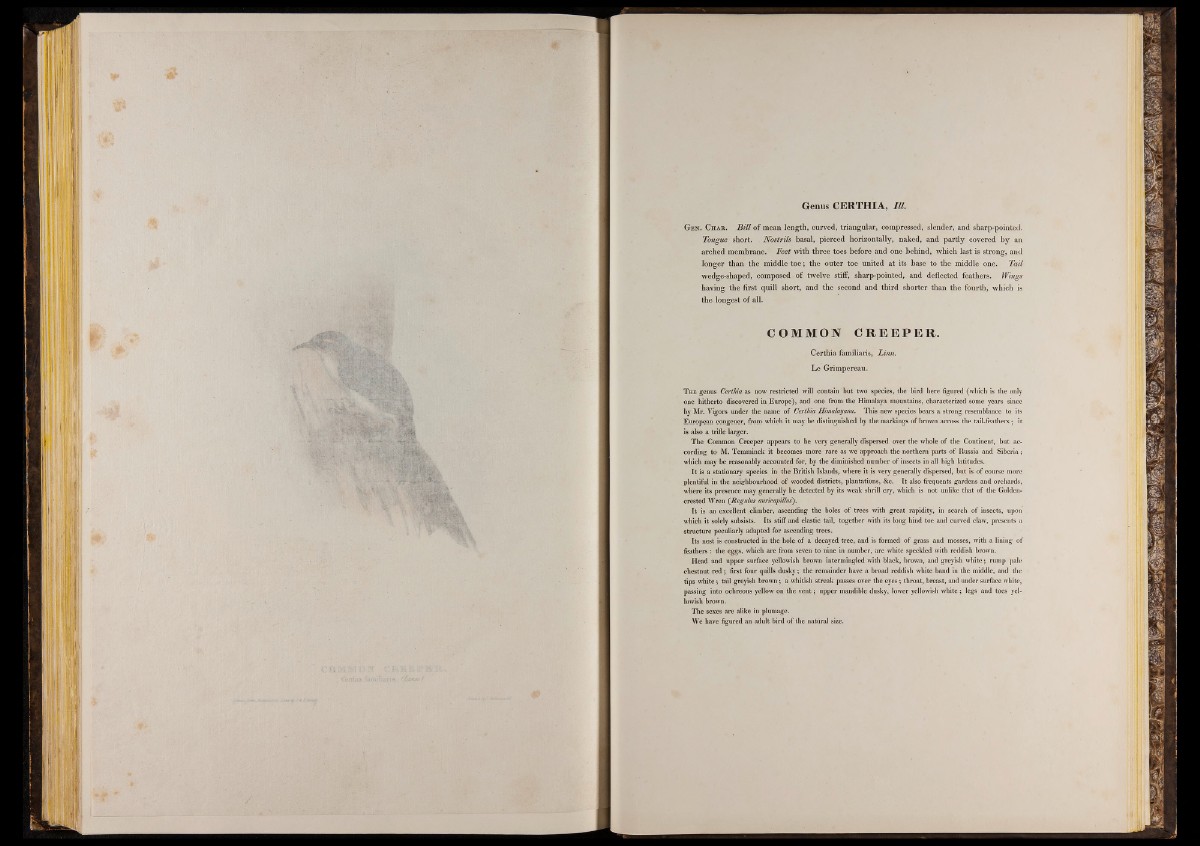
*s$SfSf
i l l
Genus CERTHIA, III.
Gen. C h a r . B i l l of mean length, curved, triangular, compressed, slender, and sharp-pointed.
Tongue short. N o s tr ils basal, pierced horizontally, naked, and p artly covered b y an
arched membrane. Feet with three toes before and one behind, which last is strong, and
longer than the middle to e ; the outer toe united a t its base to the middle one. T a il
wedge-shaped, composed of twelve stiff, sharp-pointed, and deflected feathers. Wings
having the first quill short, and the second and third shorter than the fourth, which is
th e longest of all.
COMMON CRE E P ER.
C e rth ia familiaris, L in n .
L e G rim p e reau .
The genus Certhia as now restricted will contain but two species, the bird here figured (which is the only
one hitherto discovered in Europe), and one from the Himalaya mountains, characterized some years since
by Mr. Vigors under the name of Certhia Himalayana. This new species bears a strong resemblance to its
European congener, from which it may be distinguished by the markings of brown across the tail-feathers; it
is also a trifle larger.
The Common Creeper appears to be very generally dispersed over the whole of the Continent, but according
to M. Temminck it becomes more rare as we approach the northern parts of Russia and Siberia;
which may be reasonably accounted for, by the diminished number of insects in all high latitudes.
It is a stationary species in the British Islands, where it is very generally dispersed, but is of course more
plentiful in the neighbourhood of wooded districts, plantations, &c. It also frequents gardens and orchards,
where its presence may generally be detected by its weak shrill cry, which is not unlike that of the Golden-
crested Wren ('Regains auricapillus').
It is an excellent climber, ascending the boles of trees with great rapidity, in search of insects, upon
which it solely subsists. Its stiff and elastic tail, together with its long hind toe and curved claw, presents a
structure peculiarly adapted for ascending trees.
Its nest is constructed in the hole of a decayed tree, and is formed of grass and mosses, with a lining of
feathers: the eggs, which are from seven to nine in number, are white speckled with reddish brown.
Head and upper surface yellowish brown intermingled with black, brown, and greyish white; rump pale
chestnut red; first four quills dusky; the remainder have a broad reddish white band in the middle, and the
tips white; tail greyish brown; a whitish streak passes over the eyes; throat, breast, and under surface white,
passing into ochreous yellow on the vent; upper mandible dusky, lower yellowish white; legs and toes yellowish
brown.
The sexes are alike in plumage.
We have figured an adult bird of the natural size.